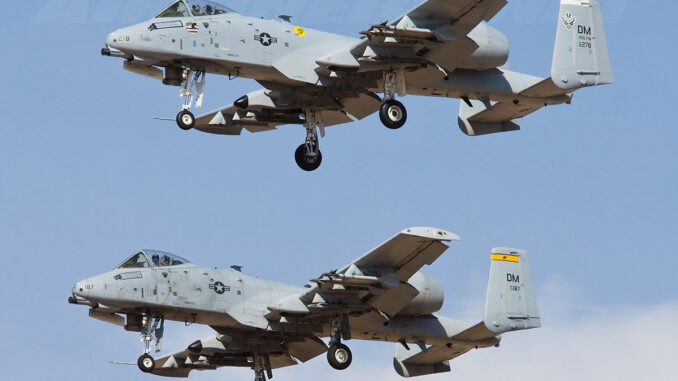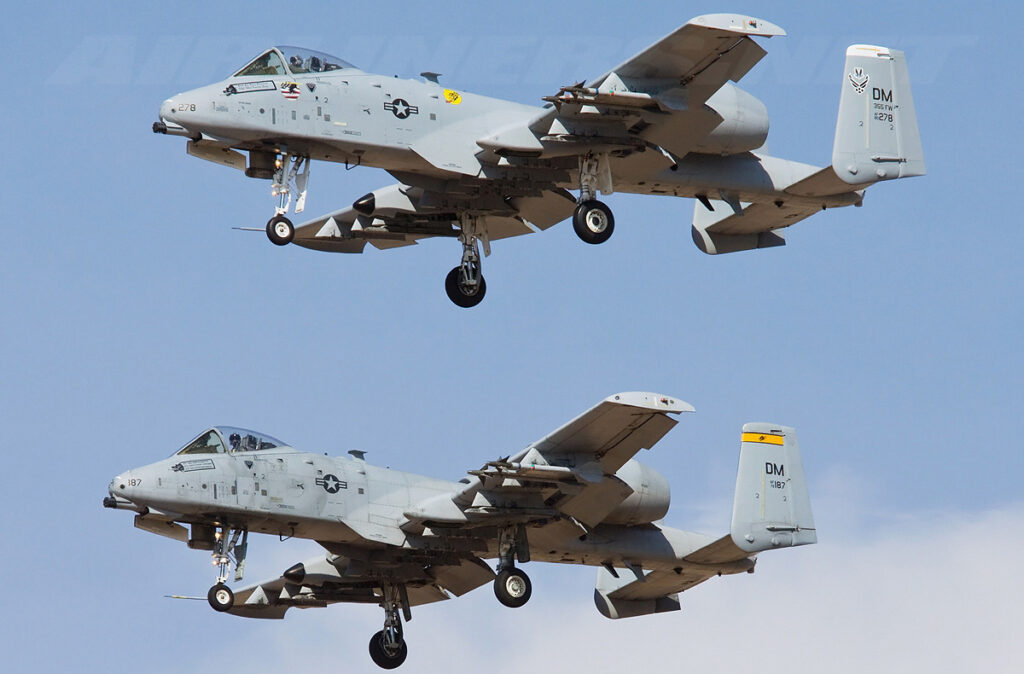
Jordan could acquire A-10 Warthogs, increasing its ground attack capabilities and paving the way for other aircraft transfers.
Jordan could soon receive A-10 Warthogs from the US Air Force, which plans to withdraw these aircraft by 2030. The US Senate has asked the Pentagon to study the feasibility of this transfer, which could strengthen Jordan’s ground attack capabilities. The A-10s, known for their 30mm GAU-8/A cannon, are capable of close air support missions and precision strikes. This transfer could also pave the way for other countries interested in these aircraft.
The planned withdrawal of the A-10 Warthog from the US Air Force by the end of the decade has attracted the interest of several countries, including Jordan. This study examines the potential implications of this transfer, the capabilities of the A-10 and the impact on Jordanian defence.
Details of the potential transfer
The US Senate recently asked the Pentagon to examine the possibility of transferring A-10s to Jordan. This request is contained in a report accompanying the Defence Policy Bill for Fiscal Year 2025. The study is due by 1 February 2025 and will include an analysis of Jordan’s ability to maintain these aircraft.
To date, the U.S. Air Force owns approximately 218 A-10s, divided between active, reserve and Air National Guard units. Jordan, a major US ally in the Middle East, could benefit from these aircraft to strengthen its ground attack and close air support capabilities.
A-10 Warthog capabilities
The A-10 Warthog, which entered service in the 1970s, is best known for its 30mm GAU-8/A Avenger gun. This gun can fire up to 4,200 rounds per minute, making it a formidable weapon against armoured vehicles and fortified ground targets. The A-10 can also carry a variety of munitions, including precision-guided bombs, air-to-surface missiles and guided rockets.
These aircraft are designed for durability, with a reinforced structure to survive enemy fire. Their ability to fly at low altitude and low speed enables effective close air support missions, with high precision and loitering (prolonged parking) capability over combat zones.

Consequences for Jordan
The acquisition of the A-10 could significantly enhance Jordan’s military capabilities. Currently, Jordan’s air fleet consists mainly of F-16AM/BMs and a few turboprop light attack aircraft. The A-10s could provide additional capacity for ground attack missions, freeing up the F-16s for air defence and air superiority missions.
Jordan is engaged in counter-terrorism operations and a counter-narcotics campaign along its border with Syria, often involving air strikes. The A-10s, with their ability to operate effectively in low-intensity environments, would be well suited to these missions.
Geopolitical and military implications
The transfer of the A-10s to Jordan could have a significant impact on the region. On the one hand, it would strengthen the military capabilities of Jordan, a strategic ally of the United States in the fight against terrorism in the Middle East. On the other hand, it could arouse the interest of other countries in acquiring these aircraft, notably Ukraine, which had previously expressed an interest in the A-10.
In addition, enhancing Jordan’s air capabilities could help stabilise the region by providing a more robust response to terrorist threats and cross-border incursions. It could also improve Jordan’s ability to participate in joint operations with US and allied forces.
Challenges and limitations
Despite their advantages, the A-10s also present challenges. Their age and problems with the supply chain for certain spare parts could pose maintenance problems. In addition, training Jordanian pilots and technicians to operate and maintain these aircraft could require considerable resources and time.
The costs associated with upgrading and maintaining the A-10s must also be taken into account. Although the A-10s have been upgraded with new wings and avionics, maintaining their operational status will require ongoing investment.
Future prospects
The transfer of the A-10s to Jordan could pave the way for other similar transactions. Other countries may see the A-10s as a cost-effective way of strengthening their ground attack capabilities. In addition, it could encourage the US to consider new strategic partnerships and transfers of surplus military equipment to other allies.
If the transfer is deemed feasible and beneficial, it could mark the beginning of a new chapter for the A-10, giving these iconic aircraft a second life in the service of other nations.
The potential transfer of the A-10 Warthog to Jordan could significantly enhance Jordan’s military capabilities, while opening up new opportunities for other interested countries. Despite the challenges associated with maintaining these older aircraft, the advantages in terms of firepower, durability and versatility make them an attractive option for close air support and counter-terrorism operations. The success of this initiative will depend on Jordan’s ability to integrate and maintain these aircraft, as well as the wider geopolitical implications of this transfer.
War Wings Daily is an independant magazine.